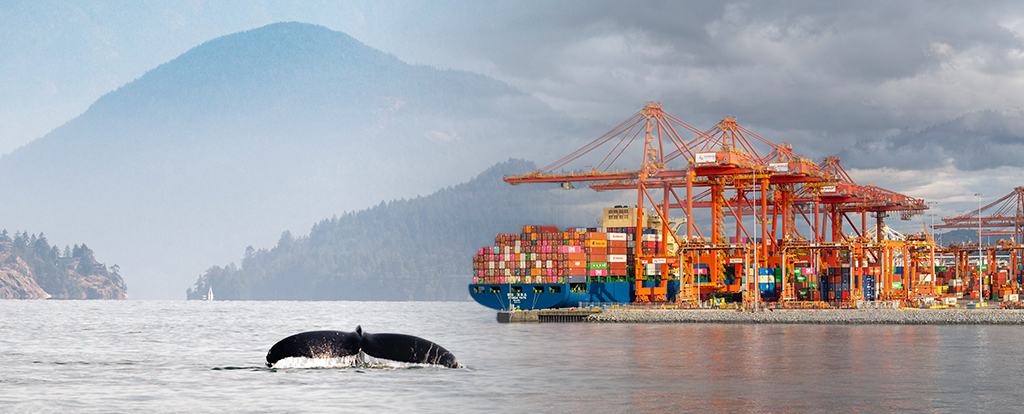Efforts to reduce the environmental footprint in the port, mining and metallurgy sectors have become imperative to ensure the sustainability of these crucial industries. The emergence and evolution of environmental tools has paved the way for innovative solutions to mitigate the negative environmental impacts of these activities. From the use of cutting-edge technologies to reduce greenhouse gas emissions, to the introduction of sustainable waste management and ecosystem preservation practices, these tools offer essential and cost-effective opportunities for the responsible and eco-efficient governance of the operations of the companies concerned.
LCA – A Decision-Making Tool
Environmental Life Cycle Assessment (LCA) has become an indispensable tool for assessing the overall environmental footprint of mining, metallurgical and port activities, from extraction to ore processing and waste management. Whether from an eco-design perspective and/or to assess circularity strategies, it offers an in-depth understanding not only of greenhouse gas (GHG) emissions, but also of energy consumption, natural resource use, pollutant emissions, and the impact on local ecosystems. Lifecycle thinking helps to avoid the adverse effects of carbon neutrality and circular economy strategies by considering the whole picture (scopes 1, 2 and 3).
Nevertheless, in a context of sustainable development and to avoid adverse effects from one sphere to another (e.g. environmental to social), assessment would require the joint use of different types of LCA (environmental, social and economic LCA) known as Life Cycle Sustainability Analysis, whose guidelines are defined by the UNEP/SETAC framework [1] [2].
In conclusion, LCA is a powerful decision-support tool that enables the development of technological solutions that effectively contribute to reducing environmental, economic, and social impacts, while meeting the climate objectives essential to the long-term sustainability of the activities of these Canadian industrial sectors.
Complementarity With Environmental Impact Studies
The limitations of environmental LCA mean that in-depth studies of environmental and social impacts are still essential to assess the local consequences of industrial activities on communities, workers, and ecosystems, thereby guaranteeing a global and holistic approach to sustainability as defined by the United Nations.
Nature-Based Solutions
Nature-based solutions to climate change are actions that conserve, restore, or improve land management practices to increase carbon sequestration and/or avoid GHG emissions. They can also be an option for reducing residual GHG emissions by capturing carbon through activities such as reforestation, wetland restoration and soil sequestration. [3]. Well-designed nature-based solutions can also improve human resilience to the impacts of climate change. They can also increase our ability to adapt to the effects of climate change that will still be present in a world with no net emissions, reduce exposure to climate-related risks such as flooding, and reduce the sensitivity of communities to climate change and the resulting economic disruption, for example by diversifying income. [4].
In a more global context, nature-based solutions also address the cross-cutting challenges posed by climate change, such as natural risk management, health, water supply and food security, while ensuring social well-being and producing benefits for biodiversity. [5].
In fact, ecosystem-based adaptation solutions help mitigate the effects of climate change, just as water security solutions generate additional social, economic, and environmental benefits, while enabling mitigation and adaptation. Solutions focused on food security in agricultural areas help conserve water and biodiversity, while supporting the reduction, adaptation, and mitigation of natural disasters. [4].
The Expert Company Difference
Every company must be resolutely committed to achieving carbon neutrality in the next few years. A seasoned climate change team, combined with engineering expertise, must always be ready to support industries in their transition to greater sustainability and circularity. It is undeniable that environmental protection can be perfectly harmonized with economic and social considerations, while contributing to a more responsible design of technological solutions and assets.
To achieve this, it is essential to partner with a well-versed multidisciplinary team in local and global environmental issues, as well as in the direct and indirect impacts associated with economic and human activities. We invite you to join us in this effort towards an optimistic, cleaner, and fairer future for Canada and our planet.
Bibliography
[1] UNEP/SETAC Life Cycle Initiative, «Towards a Life Cycle Sustainability Assessment, Making informed choices on products.,» UNEP DTIE, Paris, France, 2011.
[2] A. de Bortoli, A. Bjørn, F. Saunier & M. Margni, «Planning sustainable carbon neutrality pathways: accounting challenges experiences by organizations and solutions from industrial ecology,» The International Journal of Life Cycle Assessment, vol. 28, pp. 746-770, 2023.
[3] World Business Council for Sustainable Development, «The role of Nature-based Solutions in strategies for Net Zero, Nature Positive and addressing Inequality. Insights from the evolution of Natural Climate Solutions as part of corporate action on Climate,» wbcsd.
[4] United Nations Environment Program and Internation Union for Conservation of Nature, «Nature-based solutions for climate change mitigation,» UNEP, Nairobi and Gland, 2021.
[5] Union Internationale pour la Conservation de la Nature, «Les solutions fondées sur la nature,» [Online]. Available: https://uicn.fr/solutions-fondees-sur-la-nature/. [Access on November 31st, 2023].
[6] ISO, ISO 14040:2006. Management environnemental. Analyse du cycle de vie. Principes et cadre, 2 éd., 2006.
[7] ISO, ISO 14044:2006. Management environnemental. Analyse du cycle de vie. Exigences et lignes directrices, 1 éd., 2006.
AUTHOR
Aline Cobut
Team Leader – Climate Change Expertise
Social Acceptability and Environment
